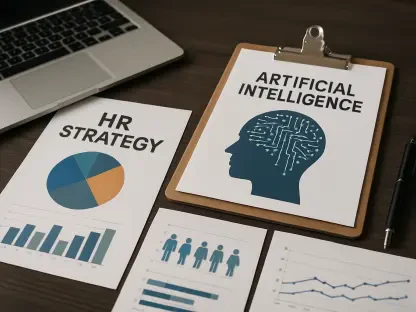Imagine a hiring landscape where subjectivity and inefficiency no longer bog down talent acquisition, and where technology seamlessly aligns the right candidate with the right role in a fraction of the time. This vision is becoming reality with tools like Plum Role Model, recently named a Top HR Product of 2025 by HR Executive. In an era where organizations scramble to adapt to rapid workforce changes, this recognition signals a shift toward data-driven, innovative solutions. This roundup gathers diverse perspectives from industry leaders, HR professionals, and tech analysts to explore what makes Plum Role Model a standout, how it’s reshaping hiring practices, and what lessons can be learned from its success.
Exploring the Impact of Plum Role Model on Modern HR
Why This Recognition Matters in Today’s Talent Landscape
The accolade from HR Executive isn’t just a badge of honor; it reflects a critical need for tools that address persistent challenges in talent acquisition. Industry observers note that with labor markets tightening and skills demands evolving, HR teams are under immense pressure to hire faster without sacrificing quality. Plum Role Model’s ability to streamline job analysis and candidate matching has caught attention as a potential game-changer in this high-stakes environment.
Many professionals highlight that traditional hiring often hinges on outdated job descriptions or gut feelings, leading to costly mismatches. The consensus among HR thought leaders is that an automated, science-backed approach offers a much-needed reset. This tool’s rise to prominence underscores a broader push for efficiency and objectivity in recruitment strategies across sectors.
A recurring theme in discussions is the urgency of adapting to a workforce that values durable skills like collaboration over rigid qualifications. Analysts point out that this recognition validates the shift toward prioritizing human potential, positioning Plum Role Model as a beacon for organizations navigating complex hiring dynamics.
Diverse Opinions on Addressing Hiring Challenges
Feedback from HR practitioners reveals a mix of excitement and cautious optimism about integrating such technology. Some emphasize the drastic reduction in hiring timelines, noting that the AI-driven analysis of over 40,000 job titles saves countless hours previously spent on manual role definitions. This efficiency is seen as a lifeline for understaffed departments.
Conversely, a segment of industry voices raises concerns about over-dependence on algorithms, warning that human judgment still plays an indispensable role in nuanced hiring decisions. These skeptics argue that while the tool’s behavioral benchmarks are impressive, cultural fit and unique candidate traits might slip through the cracks of automated systems if not balanced with personal oversight.
Tech reviewers bridge these perspectives by suggesting that the true value lies in using Plum Role Model as a complementary asset rather than a standalone solution. They advocate for a hybrid model where data informs decisions but doesn’t dictate them, ensuring fairness while leveraging the speed and precision that AI brings to the table.
Breaking Down Plum Role Model’s Innovative Features
AI-Powered Job Analysis: A Step Forward or a Risk?
Industry analysts are abuzz about how Plum Role Model transforms job descriptions into detailed behavioral benchmarks in mere seconds using artificial intelligence. This capability is often described as revolutionary, with many pointing out that it eliminates much of the guesswork that plagues traditional role definitions, replacing it with validated, auditable outcomes.
HR tech enthusiasts further praise the tool’s expansive database, which covers a vast array of job titles and emphasizes durable skills like communication and teamwork. Such a focus resonates with current trends favoring adaptability over static expertise, and several reviews highlight how this approach aligns hiring with long-term organizational needs rather than short-term fixes.
However, not all feedback is unequivocally positive. Some tech critics question whether AI can fully capture the subtleties of certain roles, especially in creative or highly specialized fields. They caution that while the precision is undeniable, there’s a risk of oversimplifying complex human-centric positions, urging companies to weigh these limitations before full adoption.
Behavioral Insights Driving Hiring Efficiency
Across various forums, HR managers share stories of how Plum Role Model’s focus on behavioral strengths, cognitive abilities, and work styles has refined their candidate selection process. Many report a noticeable uptick in hiring consistency, with matches that better predict on-the-job success compared to conventional methods.
A contrasting viewpoint emerges from smaller organizations, where budget constraints often limit tech investments. Representatives from these firms acknowledge the tool’s potential but stress that implementation costs and training requirements could pose barriers. They suggest that scalability and accessibility remain key areas for improvement to democratize such innovations.
Meanwhile, industry consultants offer a balanced take, noting that while the efficiency gains are clear, the competitive HR tech market demands continuous evolution. They argue that Plum Role Model’s edge lies in its ability to integrate with existing systems, but staying ahead will require ongoing updates to address diverse industry needs and user feedback.
The Role of AI and I/O Psychology in Shaping HR Tech
The fusion of artificial intelligence and industrial-organizational psychology in tools like Plum Role Model is widely regarded as a defining trend in HR technology. Experts across the board agree that this combination meets the growing demand for strategic workforce planning, especially as global talent pools become more dynamic and unpredictable.
Differing opinions surface on how quickly this trend will dominate. Some tech forecasters predict rapid adoption across industries like tech and healthcare, where precision in hiring is paramount. Others, particularly in traditional sectors, believe that cultural resistance to tech-driven hiring could slow progress, necessitating tailored education and change management strategies.
A shared insight among commentators is the importance of maintaining ethical standards in AI applications. Many stress that while the science behind behavioral analysis is robust, ensuring transparency and fairness in algorithmic decisions is non-negotiable. This balance is seen as critical to sustaining trust in such tools over the coming years, from 2025 to 2027 and beyond.
How the Award Reflects Industry Standards
The rigorous evaluation process for the Top HR Product award, conducted by HR Executive and HR Tech, is frequently cited as a benchmark for credibility. Reviewers note that criteria like innovation, user experience, and integration capabilities were central to Plum Role Model’s selection, signaling its holistic impact on HR functions.
Comparisons with other recognized tools reveal varied perspectives on what constitutes a top product. Some industry watchers argue that while Plum Role Model excels in job analysis, other solutions might edge it out in areas like employee retention or engagement. This sparks debate on whether a singular focus or a broader suite of features better serves HR needs.
A final point of discussion centers on market influence. Analysts and HR leaders alike suggest that this award will likely boost Plum Role Model’s visibility, encouraging competitors to innovate similarly. The ripple effect, they predict, could elevate standards across the HR tech space, benefiting organizations seeking cutting-edge solutions.
Key Takeaways from Industry Perspectives
Reflecting on the myriad insights, several key themes emerge from this roundup. Plum Role Model’s AI-driven precision and emphasis on behavioral competencies stand out as transformative, with many agreeing that it addresses core inefficiencies in hiring. Yet, the dialogue also reveals a spectrum of concerns, from accessibility hurdles to ethical considerations in automation.
Practical advice for HR leaders includes starting with pilot programs to test data-driven tools within specific departments before full-scale rollout. Additionally, blending tech with human intuition is repeatedly recommended to maintain a personal touch in recruitment, ensuring that cultural and individual nuances aren’t overlooked in the pursuit of speed.
Another actionable tip is to prioritize training and change management when adopting such platforms. Feedback consistently underscores that employee buy-in and understanding are as crucial as the technology itself, paving the way for smoother transitions and more effective use of innovative systems.
Reflecting on the Path Forward for HR Innovation
Looking back on the discussions, it is evident that Plum Role Model’s recognition as a Top HR Product of 2025 sparked meaningful conversations about the future of talent acquisition. The diverse opinions and insights gathered paint a picture of an industry at a crossroads, balancing technological advancements with the irreplaceable value of human insight.
Moving forward, organizations should consider investing in partnerships with HR tech providers to customize solutions like Plum Role Model to their unique needs. Exploring integrations with existing systems can maximize impact, while regular feedback loops with users will help refine these tools over time.
Lastly, staying informed about emerging trends in AI and behavioral science proves to be a vital step for HR professionals aiming to remain competitive. Engaging with industry networks and forums can provide ongoing learning opportunities, ensuring that talent strategies evolve in tandem with technological progress.









